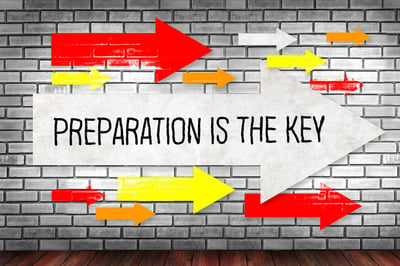Tariff Classification – Do your homework and get it right the first time.
“Quality is never an accident. It is always the result of an intelligent effort.” - John Ruskin, Art Critic and Writer
Proper tariff classification is the foundation of import and export trade compliance. The Harmonized Commodity Description and Coding System (also known as the Harmonized System, or HS) is the internationally standardized system of classifying traded products, and is applied by over 180 countries and territories worldwide.
Tariff classifications are numerical codes that communicate to customs the material make-up, primary purpose, and end-use of every imported item. Tariff classifications are also used to determine the duties payable, tax rate, and whether or not the goods are subject to additional licensing, permits, or special designations.

The HS is organized into 21 sections that are subdivided into 99 chapters. These are further subdivided into approximately 5,000 headings and subheadings.
Sifting through the HS to find the correct tariff classification can be a big headache. But this is important stuff: a business that assigns incorrect tariff classification may suffer far-reaching consequences – beyond the immediate financial hit. Non-compliance can lead to shipment delays, increased inspections, and – in the event of a customs verification – administrative penalties, and owing of additional payment of duties, taxes and interest.
Becoming knowledgable about tariff classification can be complex and time-consuming. Companies may not have the time and resources to develop the expertise to ensure correct tariff classification every time.
Why do these errors happen? What went wrong?
Importers often choose to sell their products immediately after importing them. And they would naturally consider the cost of duty they expect to pay on those goods in the selling price. But what happens if Customs later determines that the product actually falls under a different tariff classification with a higher duty rate? Bad news! The profit on those sales has just shrunk, or worse – the product has been sold at a loss. There is no way to recover these losses after the fact.
How can these headaches be avoided?
Maximize your chance of success. Below are the key steps for arriving at the correct tariff classification.
- Ask the following questions for every product to be imported or exported:
- What exactly are the goods?
- What is their intended end use?
- What are they made of?
- Look up the HS Section and Chapter legal notes to confirm the product is in the correct chapter.
- Compare tariff headings to ensure the correct heading and subheading.
- Review the applicable World Customs Organization (WCO) explanatory notes to ensure the product is not excluded from certain headings.
In addition, keep the following points in mind:
- When communicating with vendors and shippers, stress the importance of providing accurate and detailed descriptions on shipment documentation. Vendors and shippers should provide a tariff classification to the sub-heading level (6 digits) on customs paperwork.
- CBSA offers advance rulings on tariff classification, which can save time and provide certainty upon importation. See the CBSA website for more information on advance rulings.
- The U.S. International Trade Commission also offers a look-up feature for HS codes for importers to the U.S.
- Having the correct HS classification is also essential for determining NAFTA eligibility. Keep this in mind for goods that may fall under NAFTA.
Remember, tariff classification impacts almost every aspect of customs reporting and, as the importer or exporter, you are ultimately responsible for your customs compliance. If you don’t have adequate in-house tariff classification knowledge, get educated or seek the advice of a qualified customs broker or customs consultant.
We can help
Consider working with a customs broker to reduce the headache and uncertainty around this. Our Customs Consulting Department can assist you with tariff classification and all other aspects of import and export compliance. For more information, visit our website or...
Information provided by: Customs Consulting Department. - Cole International

Latest Articles
- Watch out for these extra charges on your freight bill
- Key differences between duty drawbacks and duty refunds for importers
- Mitigating container shortages and rising shipping prices for ocean imports
- How Canadian importers benefit from end use tariff codes and conditional relief
- The benefits of operating as a Non-Resident Importer in Canada
